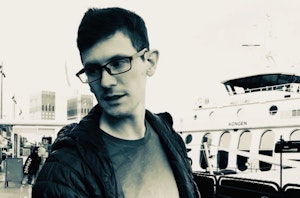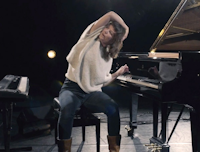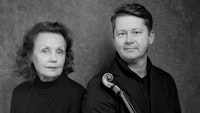Field of study: Artistic Research (Composition)
Øyvind Mæland: Flow-obstructed phrasing

Through his artistic research project, Mæland seeks to expand the possibilities of expression as a composer by exploring the potential in what he has termed flow-obstructed phrasing.
Summary
Mæland defines flow-obstructed phrasing as a way of phrasing giving the composer and/or musician a physical experience of adding resistance to the breath or body, and he uses this mainly in order to create an intensified sense of presence.
In several of his works the last years, Mæland has sought a music with a type of intensity that, even when the music is low-key, comes with precise and sharp “edges”/“contours” in acoustic music.
While flow is defined as an even continuum, the obruction is a hindrance, whether dramatic or subtle. Phrasing is related to breath, and flow-obstructed phrasing is what occurs when the breath/body is met with obstacles such as filters/friction, certain types of irregularity, breaks/stops, etc. This may involve how a sound/resonance is damped/stopped (from sound to silence), and how one instrument or one voice must work to efficiently get from one sound to a markedly different one – in one breath (legato), often even on the same pitch. It may also include phrases with sudden changes in dynamics/spatialisation.
Specific musical prototypes towards a work for the stage
Earlier experience and challenges with similar musical approaches has convinced Mæland that there is more to be explored, and furthermore he believe that the compositional ideas of flow-obstructed phrasing may be transferred to other more visually corporeal art fields: The heavy focus on breath/body necessarily makes it natural to include movement and theatricality, in which he will do in at least 2 out of the 5 project compositions.
Prior to investigating the transferability from musical phrase to other art disciplines, he will gather an overview of as many prototypes of flow-obstructed phrasing as possible, as well as discussing appropriate notation. Some prototypes can only be realized with several musicians together, the project thus taking a small step towards instrumentation/orchestration.
Obstructions?
The obstruction might represent a play with expectations, or even a way of creating new material. Although Mæland is fascinated by the flow-obstruction when it balances between something seemingly mechanical/non-human, and the corporeal-human, this is not simply a modernist urge to make demands on the listening - the obstruction pulling us out of a tranquilized flow. More importantly, he experiences that the bodily element sharpens the senses: A hypothesis is that flow-obstructed phrasing can lead to a powerful intimacy, a stronger awareness of “here and now”, potentially also a togetherness in listening.
A breathing composer
Mæland writes:
I sing when I compose. I sing what I write, whether it is individual parts, or the whole music at once. Even when complexity in fact makes such a task impossible, I sing anyway, or at least I do a "hum-breathing" through the music. Whether there is intense friction or the music is far too volatile, if the sound stops, simply cut off, or the phrases are so long that they cannot possibly be executed in one breath - I sing, and I feel it in my stomach and body.
Articles relevant
Published: Oct 15, 2021 — Last updated: Sep 4, 2025



